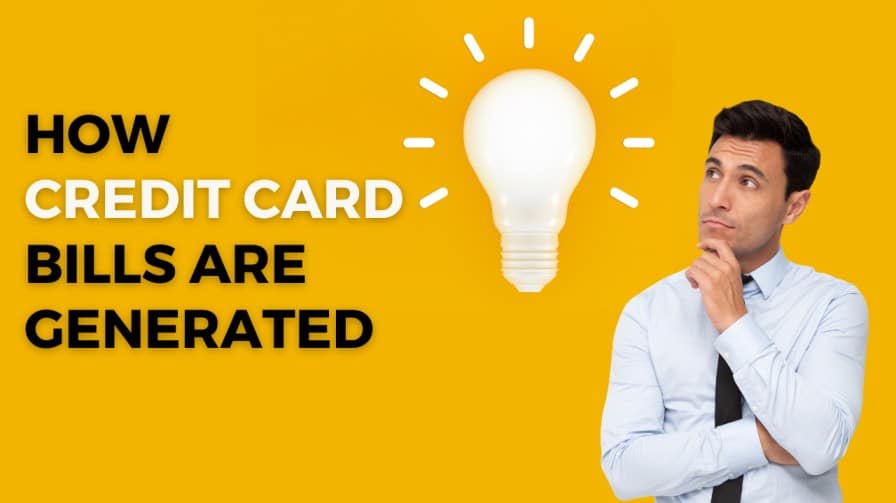Introduction
In today’s era of digital transactions, credit cards have become an indispensable tool for managing finances. However, the process of how credit card bills are generated can be complicated for many users. In this comprehensive guide, we will delve deep into the intricacies of credit card billing, exploring the credit card billing cycle, the factors that influence bill generation the components of a credit card statement, and practical tips for responsible credit card management.
Table of Contents
Unraveling the Credit Card Billing Cycle
Understanding the Billing Cycle
At the core of credit card billing is the billing cycle – a recurring period that dictates the timeline for financial transactions and bill generation. Generally lasting a month, the billing cycle commences on the statement date, the day the previous month’s statement is generated.
The Dynamics of the Billing Cycle
The billing cycle is not a static entity; it evolves with each transaction. Every purchase made after the statement date contributes to the upcoming credit card bill. The culmination of this cycle is marked by the due date, the deadline for making payments to avoid late fees and negative impacts on credit scores.
Financial Discipline: The Role of the Due Date
Understanding the due date is paramount for maintaining financial discipline. Falling behind on payments not only incurs penalties but can also lead to an adverse impact on one’s credit history. Marking the due date on your calendar ensures timely payments and financial well-being.
Factors Shaping of Credit Card Bill Generation
1. Credit Card Usage
The heartbeat of credit card bill generation is, unsurprisingly, credit card usage. Each swipe, online purchase, or cash withdrawal contributes to the grand total of your credit card bill. Keeping a vigilant eye on your spending habits allows you to anticipate and manage your financial commitments effectively.
Example:
Consider a scenario where a user, Jane, regularly uses her credit card for daily expenses. She makes purchases for groceries, gas, and even pays bills online. All these transactions collectively form the basis of her upcoming credit card bill.
2. Credit Limit: Navigating Financial Boundaries
A crucial factor influencing how credit card bills are generated is the credit limit. This is the maximum amount you can spend using your credit card. Approaching or exceeding this limit can have ramifications not only on the final bill but also on your credit score.
Example:
John, a credit card user, has a credit limit of $5,000. As he makes purchases throughout the billing cycle, he must be mindful of this limit. If he gets close to or exceeds the $5,000 threshold, it may affect his creditworthiness and increase the risk of declined transactions.
3. Interest Rates: The Cost of Borrowing
Interest rates come into play when there’s an outstanding balance from the previous billing cycle. This is a critical aspect of credit card bill generation and understanding the terms associated with interest is essential for making informed financial decisions.
Example:
Sarah has an outstanding balance of $1,000 from the previous month, and her credit card has an annual interest rate of 18%. If she doesn’t pay off this balance in full, the interest accrued would be $15, adding to her total bill for the current month.

How credit card bills are generated
The Anatomy of a Credit Card Statement and How credit card bills are generated
Deciphering the Credit Card Statement
Your credit card statement is a comprehensive document that encapsulates your financial activity during the billing cycle. Understanding the various components within the statement is vital for financial literacy.
Elements Within the Statement:
Transaction Details: A Closer Look
Your credit card statement provides a detailed breakdown of all transactions made during the billing cycle. This includes the date of the transaction, the merchant or vendor, and the amount spent.
Minimum Payment Due: The Bottom Line
The minimum payment due is the smallest amount you need to pay to keep your credit card account in good standing. While it might be tempting to pay only the minimum, it’s important to recognize the potential pitfalls of this approach.
Total Amount Due: The Whole Picture
The total amount due represents the aggregate outstanding balance on your credit card. It includes all your purchases, any fees, and the aforementioned interest charges if there’s a carryover balance.
Decoding Financial Jargon
Within the credit card statement, you may encounter terminology that requires interpretation. From Annual Percentage Rates (APR) to finance charges, understanding these terms is crucial for making informed financial decisions.
Example: Understanding APR
APR is the annual percentage rate, representing the total cost of borrowing on an annual basis. If your credit card has an APR of 20%, it means you’ll be charged 20% interest on any remaining balance at the end of the billing cycle.
Navigating Potential Pitfalls: Responsible Credit Card Management
The Pitfalls of Minimum Payments
While credit card statements present the option of making minimum payments, this convenience comes with risks. Paying only the minimum can lead to a cycle of debt, as interest accumulates on the remaining balance.
Example: The Minimum Payment Trap
Let’s say Mark has a credit card bill of $1,000, and the minimum payment is $25. While it might seem manageable, paying only the minimum prolongs the time it takes to clear the debt and incurs more interest charges. In the long run, Mark ends up paying much more than the initial $1,000.
The Balance Transfer Gambit
For those grappling with high-interest rates, the concept of balance transfer might seem appealing. This involves moving debt from one credit card to another with a lower interest rate.
Consideration: The Fees Factor
While a lower interest rate can be advantageous, it’s essential to be aware of any balance transfer fees associated with this maneuver. Additionally, understanding the long-term implications and ensuring it aligns with your financial goals is crucial.
Example: Weighing the Pros and Cons
Alex, facing a high-interest rate on his current credit card, considers a balance transfer to a card with a lower rate. However, after factoring in the balance transfer fee and potential impact on his credit score, he weighs the pros and cons before making a decision.
How credit card bills are generated
Conclusion:
In conclusion, demystifying the process of credit card bill generation empowers users to take control of their financial destinies. Monitoring spending habits, understanding credit limits, and staying informed about billing cycles are not just recommendations; they are essential practices for responsible credit card usage.
Key Takeaways for How credit card bills are generated:
- Knowledge is Power: Armed with knowledge about how credit card bills are generated, users can make informed decisions, avoiding common pitfalls.
- Financial Responsibility Matters: Responsible credit card management goes beyond paying bills; it involves understanding the nuances of interest rates, credit limits, and financial jargon.
- Continuous Learning: Financial literacy is an ongoing process. Staying informed about changes in credit card terms, interest rates, and personal financial goals ensures long-term financial well-being.
How credit card bills are generated FAQs
1. What is the significance of the credit card billing cycle?
Answer: The credit card billing cycle is crucial as it determines the timeframe for your financial transactions and plays a pivotal role in the generation of your credit card bill. Understanding this cycle helps you manage your expenses effectively and ensures timely payments.
2. How does exceeding my credit limit affect my credit card bill?
Answer: Exceeding or approaching your credit limit can impact your credit card bill by potentially triggering over-limit fees and affecting your credit score. It’s essential to monitor your spending to stay within the prescribed limit.
3. Can you provide an example of how interest rates contribute to the credit card bill?
Answer: Certainly! If you have an outstanding balance from the previous month, interest rates come into play. For instance, if your credit card has an annual interest rate of 15%, and you carry a balance of $500, the interest accrued for the month would be $6.25, impacting your total bill.
4. What are the key components of a credit card statement?
Answer: A credit card statement includes transaction details (listing all purchases), the minimum payment due (the smallest amount to maintain a good standing), and the total amount due (the full outstanding balance, including fees and interest).
5. How does paying only the minimum affect my credit card bill?
Answer: While paying the minimum is an option, it can lead to a cycle of debt. Interest continues to accrue on the remaining balance, potentially resulting in higher overall payments and an extended payoff period.
6. Can you elaborate on the concept of balance transfer mentioned in the article?
Answer: Certainly! Balance transfer involves moving debt from one credit card to another, often with a lower interest rate. While it can save on interest, users should consider any associated fees and weigh the pros and cons before making such a decision.
7. Why is it important to decipher financial jargon in a credit card statement?
Answer: Deciphering financial jargon, such as Annual Percentage Rates (APR) and finance charges, is crucial for understanding the true cost of credit. It empowers users to make informed decisions and avoid potential pitfalls.
8. How can I navigate the credit card billing cycle to avoid late fees?
Answer: To avoid late fees, mark your calendar with the due date, which is the deadline for making payments. Timely payments not only save you from penalties but also contribute positively to your credit history.
9. Is it advisable to make only the minimum payment on my credit card?
Answer: While making the minimum payment is an option, it’s advisable to pay more if possible. Paying only the minimum extends the time it takes to clear the debt and results in higher overall interest payments.
10. How can I use the knowledge from this article to empower my financial journey?
Answer: Understanding how credit card bills are generated empowers you to make informed decisions. Monitor your spending, stay within your credit limit, and be aware of billing cycles. Continuous learning about financial terms and responsible credit card usage ensures a strong financial foundation.





